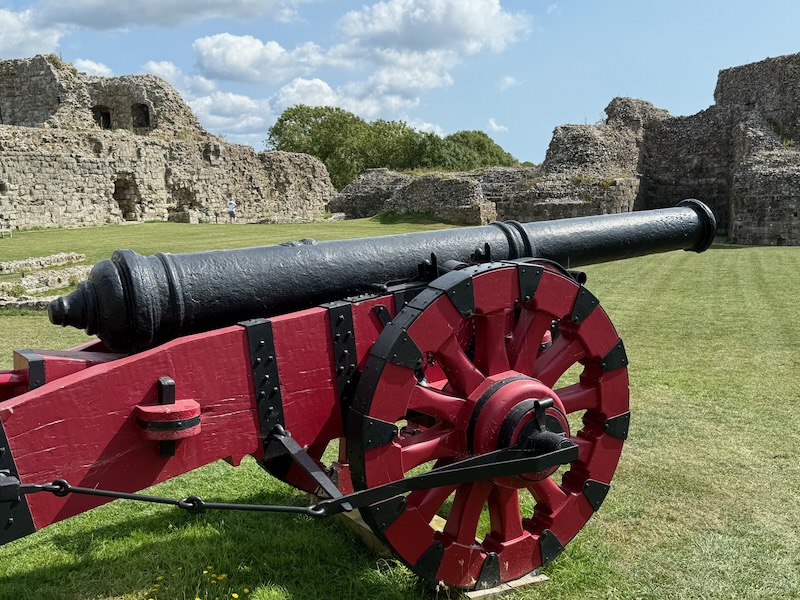Our Blog - August 2025 - England trip - Pevensey Castle
I've talked a bit about William the Conquerer and the Battle of Hastings in 1066 so far this trip. This blog will be a little bit more with William the Conquerer and 1066. But we'll start further back in time, with Anderida, the Roman fort here, dating back to around 290AD. This was one of a set of 9 Roman forts on the South and East coasts of England. These forts share many architectural features, particularly the D-shaped wall towers which were a new feature of Roman fortifications at this time. Gradually the Romans left and the fort was abandoned.
We'll fast forward to September 1066, when William Duke of Normandy sailed from France to fight King Harold for the throne of England. His invasion fleet of about 700 ships landed at the Bay of Pevensey and they set up temporary fortifications within the existing walls of the Roman fort.
A stone keep was built up against the South-Eastern Roman wall (facing the English Channel) in the 12th century and then a much larger castle was built in the 13th century, including 3 towers, a gatehouse, and a chapel in the inner bailey. It passed through various hands and weathered multiple attacks. During the 15th century the castle became a state prison. Among those held there were James I, King of Scotland, and Joan of Navarre, the second wife of Henry IV, who was accused by her stepson Henry V of plotting his death by witchcraft. Under the Tudors, the castle fell out of use altogether, and a survey of 1573 indicates that the buildings were totally ruined.
We entered the castle grounds through an opening in the 3rd century Roman walls. The entire complex is oval shaped with gates on the East and West sides. You can see 2 of the semi-circular Roman towers that were on either side of this entry way.

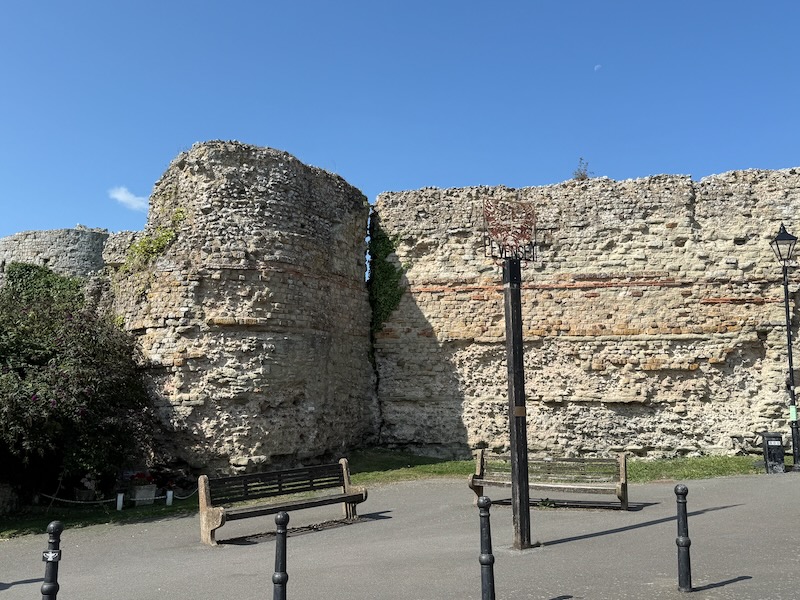

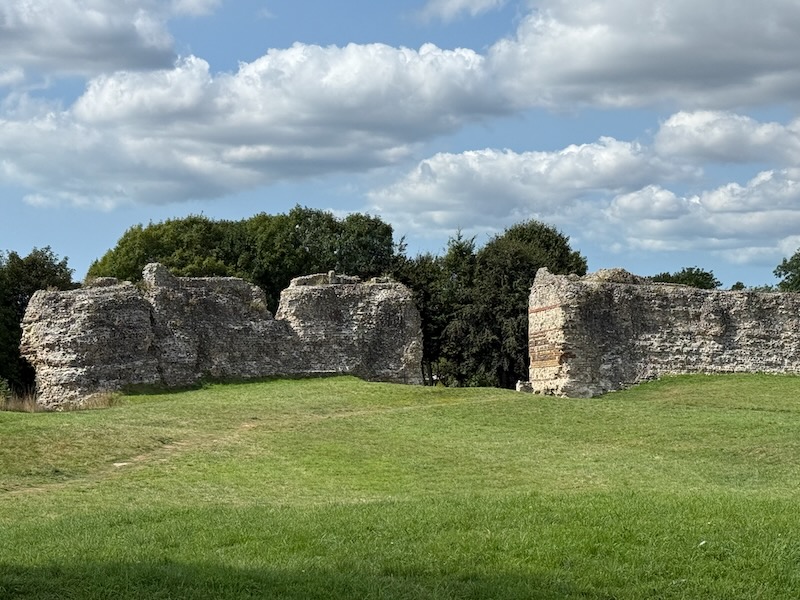
This is an aerial picture of the 13th century castle remains, with the gatehouse and 3 towers. You can also see the outline in the grassy area (the bailey) of the chapel, which was the only free-standing building in the castle.
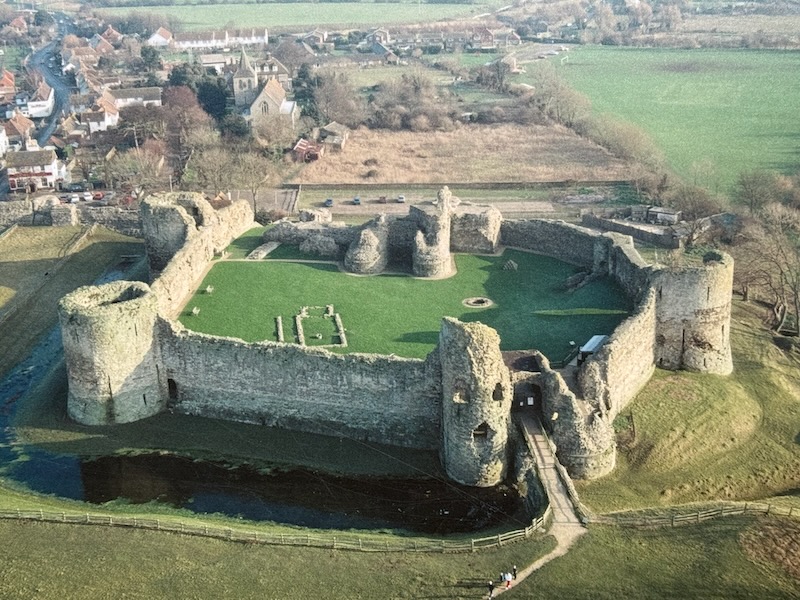
Here we are walking around one of the round corner towers (you can see the arrow slits in these whereas the Roman towers did not have them), making our way to the gatehouse. Then the gatehouse, which is the tallest remaining portion of the castle.


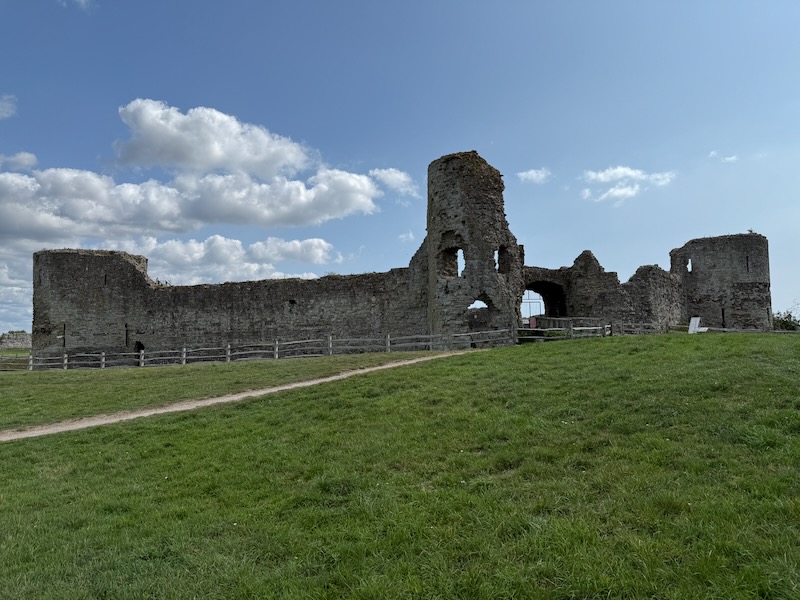
We've made our way inside and I tried to get a video going around the interior part of the castle.
At the end of the video was the gatehouse, where we entered into the 13th century castle remains, which dates to around 1220. The courtyard had various buildings built up against the walls, with a chapel and a well in the middle.
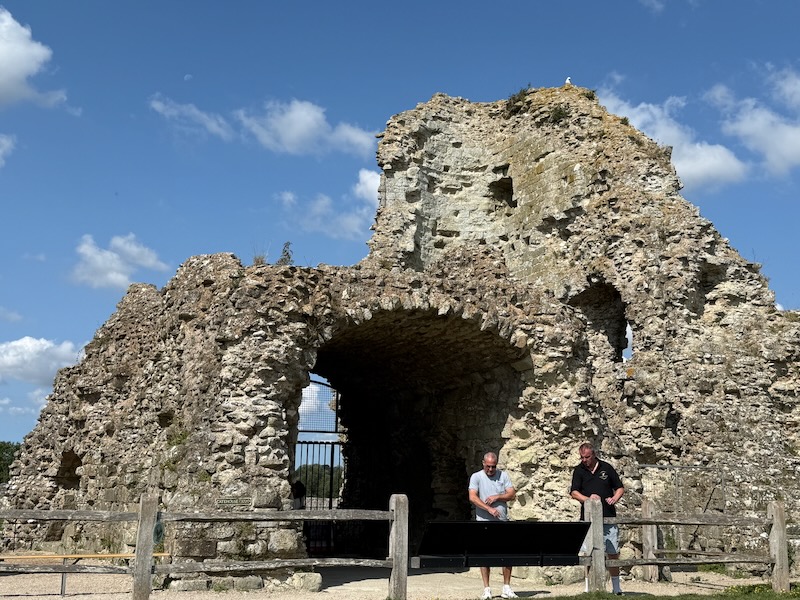
These are called Trebuchet stones, and are used by a type of catapult known as a Trebuchet. If you want to see a video of a demonstration from 2012, I found this one on Wikipedia. In this case, they were throwing something on fire, but here, they would have thrown these stones. The first recorded use of a trebuchet in England was in 1217 and these are thought to date from about 1264. (Lucy added to show scale).
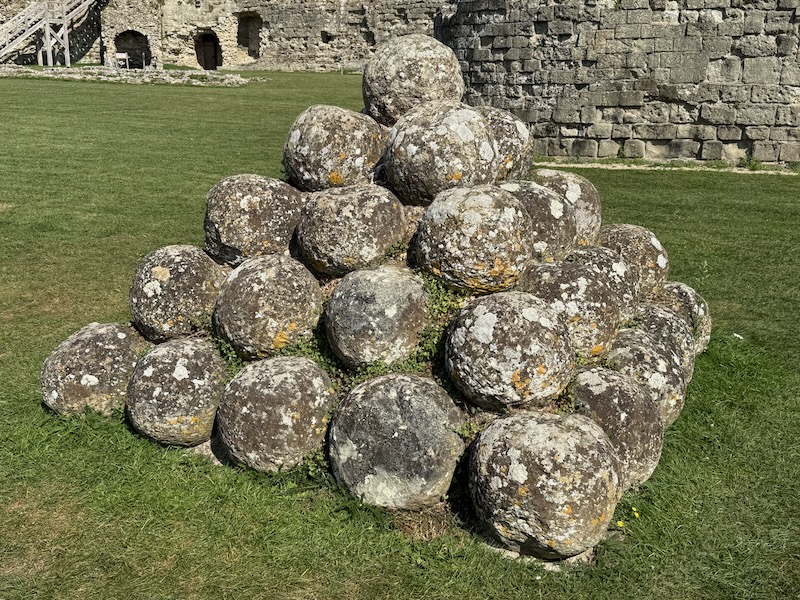
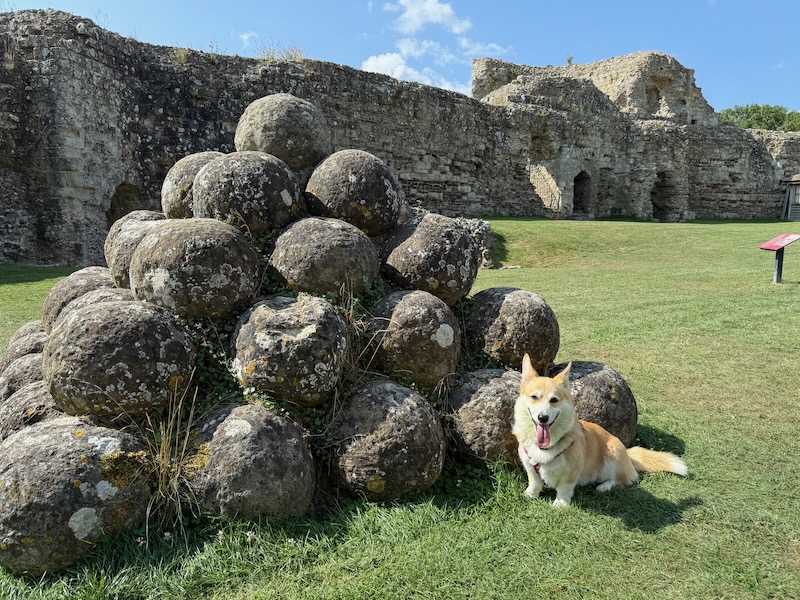
Mom ... it's hot ... can I rest in the shade, please??
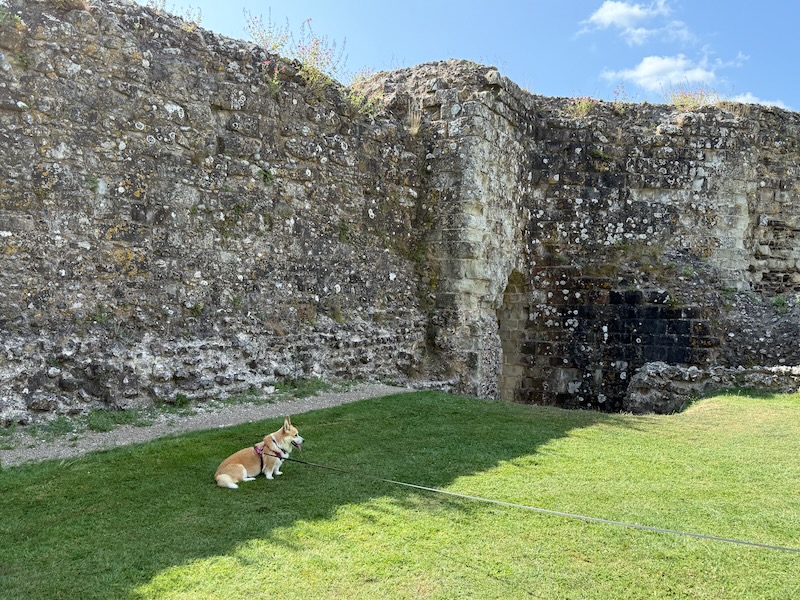
Here is the outline of the Chapel, which was the only freestanding building inside the castle, and in fact, the only somewhat permanent building. The walls and towers were stone, and the chapel was built from stone, but other buildings were wood and we have no remnants of them.

You are able to go both up and down in the North Tower, which was built around 1250. The tower has 3 levels and while from the outside, they look very utilitarian and severe, the interior had rooms built on each level with fireplaces and latrines. The basement was used for storage although I would have hated to carry much down those stairs!
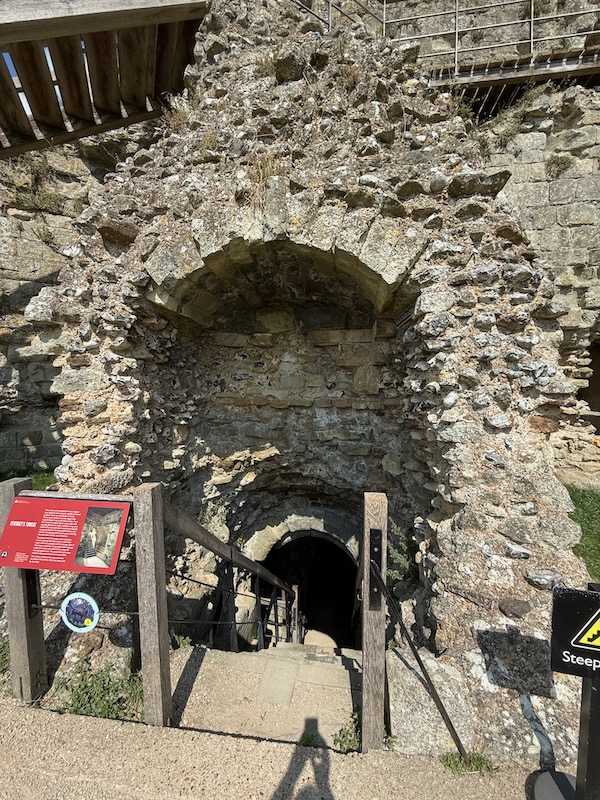
From the top of the North Tower, there is a good view of both the inner bailey (with the trebuchet stones and the chapel foundation) as well as the 13th century towers overlooking the (now mostly dry) moat and the Roman outer walls.

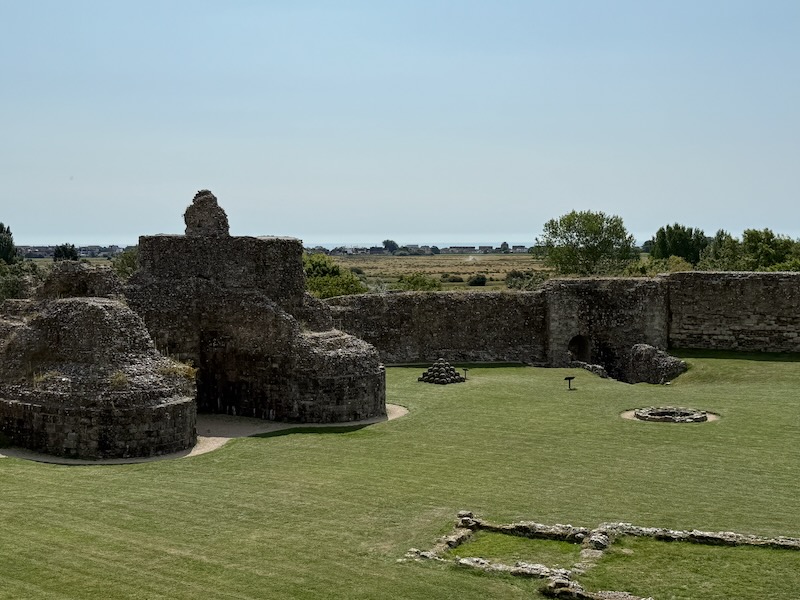
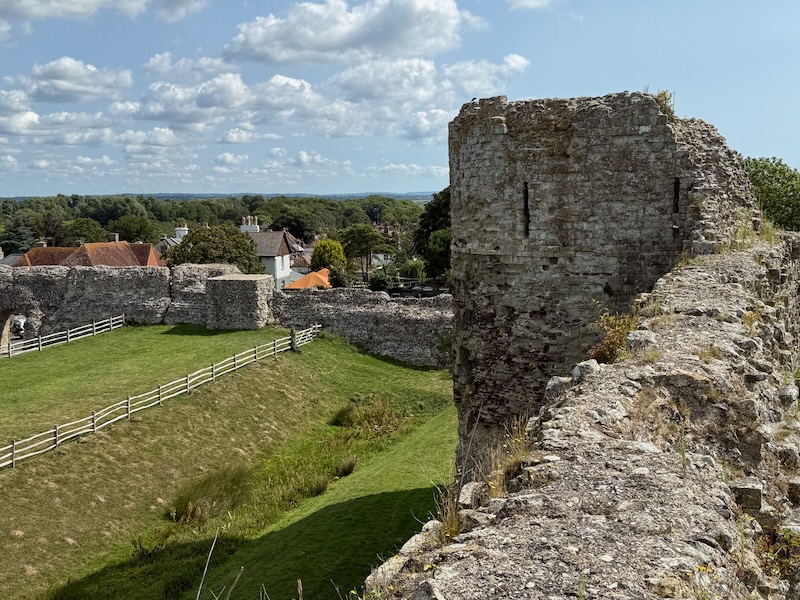
If the canon looks out of place time-wise to you, you are correct. This is one of the oldest English cast iron guns, which were first made in 1543. This one has a Tudor rose and crown with the initial "E R" for "Edwardus Rex", meaning it was cast between 1533 and 1546 during the reign of King Edward VI. It is believed to be one of 2 guns that defended Pevensey Castle in 1587/88 during an attempted invasion of the Spanish Armada.
